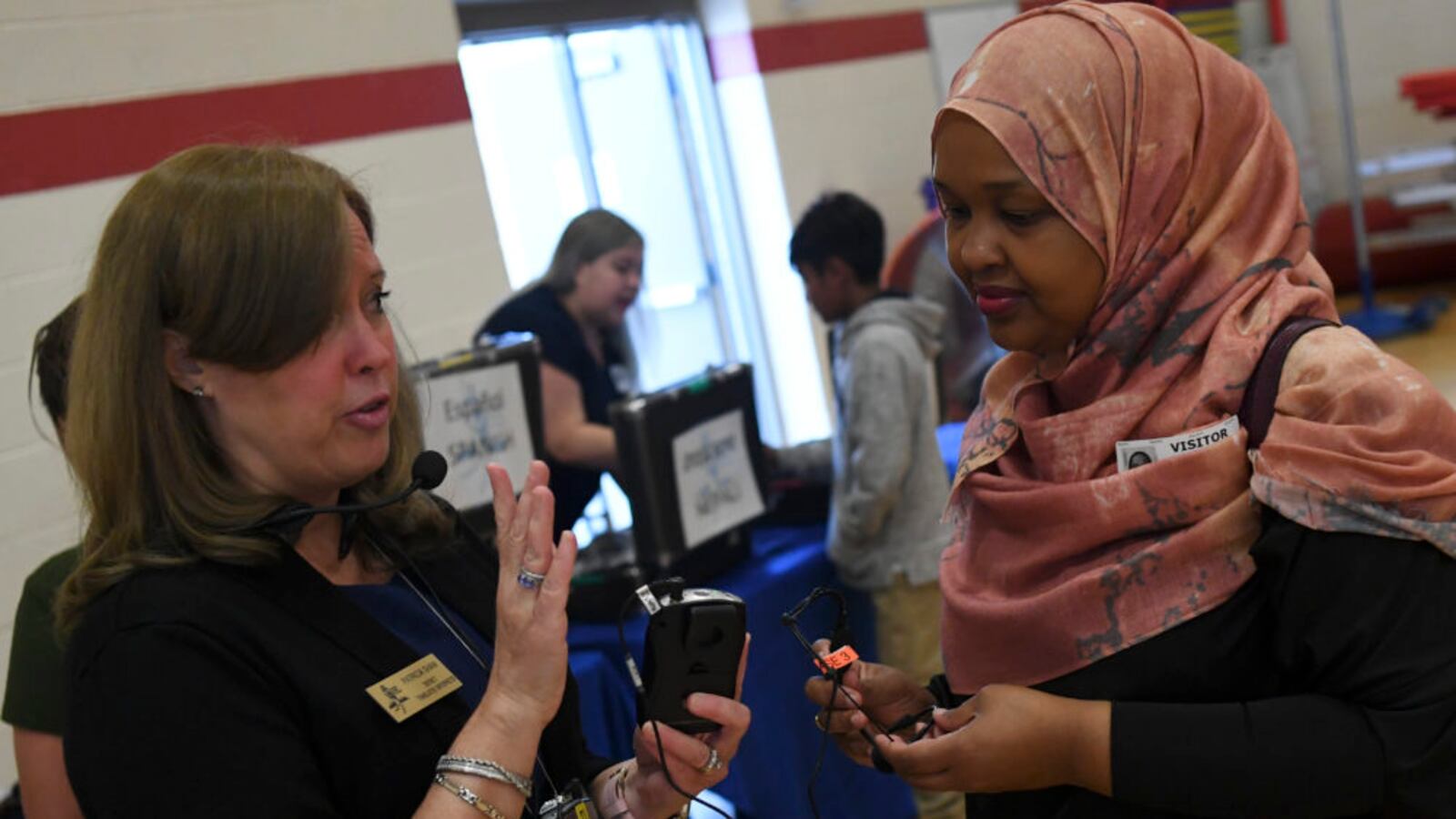Hsa Mlu, a mother of four children, recently started receiving communications from her sons’ Aurora schools in her native Southeast Asian language, Karen.
“I am so excited,” Mlu, who has two sons in Aurora schools, said through an interpreter. “I am sure it’s going to be better for parents.”
In the past Mlu said that when she received communications in English from her children’s schools, she would rush it over to a friend’s house — even in the rain or snow — to ask for help.
“I didn’t understand what I had to do or what it was for,” Mlu said.
Mlu is one of the parent leaders who has been working with the nonprofit organization RISE Colorado for more than a year to ask Aurora Public Schools to improve language services. Parents, like Mlu, have shared stories with the district and the school board, about how their language barriers have prevented them from being more involved in their children’s education. Teachers also said it was a problem for them.
In response, the district last year started working on translating some documents, and training secretaries and school staff to use the district’s system to send out automated calls in various languages. Board members responded by passing a resolution to prohibit educators from relying on children to translate official or formal discussions with parents. And this summer, the district included $200,000 in its 2018-19 budget to centralize language services under the communications office.
“Our families are feeling really excited that their voices were heard,” said RISE Colorado’s co-founder and CEO Veronica Crespin-Palmer.
Now Aurora educators, such as principals and teachers, can use a simplified, common form online to ask the district for help with translations or interpretations for their students’ families.
It’s a change from years past when language help was scattered among various district departments with each department available for only particular purposes. It was a process educators and families said wasn’t easy to understand.
Having all of the district’s expertise in one office now should help in coordinating and filling language requests, said Patti Moon, the district’s chief communication officer.
District officials expect that the simplified process will increase demand for translation or interpretation services this school year, and so the district is preparing to expand its abilities with the allocated money.
In part, that means adding services in more languages. Right now, Aurora has in-house language services for Spanish, but in a district where families have listed 143 different languages as their preferred language, there’s a need for more.
In one step to make more interpreters available, the district has been certifying its own bilingual staff in translation, so they can be available after work to pick up assignments translating or interpreting for school or district events. Currently, district officials say there are more than 120 district-approved interpreters, and officials want to recruit more. District interpreters and other staff can provide interpretation in 14 languages.
The district also has a partnership with interpreters-in-training from the Community College of Aurora.
Aurora also plans to use some of the money to improve quality by providing professional training to language services staff.
But the parents’ work will continue, said the mother, Mlu. Parents requested to continue monthly meetings with the district’s language staff to provide feedback about how the schools are rolling out the changes. The district agreed to continue the collaboration.
In addition to streamlining its internal communications, the district is providing one service designed for parents and the community: the introduction of language identification cards.
RISE parents designed the business-size cards that the district printed in the top 10 languages, with a blank space for people to fill in their name to show school attendants what language they speak. Accompanying one-sheet forms include translations of common requests such as excusing a child from school, requesting a meeting with a teacher, or asking for an interpreter. (See a copy of both below)
The cards will be made available in schools for parents to use and have an easier time communicating simple requests, or asking for an interpreter.
Crespin-Palmer said she hopes the cards, the process, and the changes the district is making can be a model for other districts.
Mlu said she appreciates the significant changes she’s seen so far. But, she said, she’s still wants the district to know she’s watching.
“We are parent leaders, and we keep watching the for the interpretation and translation to improve,” she said. “We’re working toward it too.”

